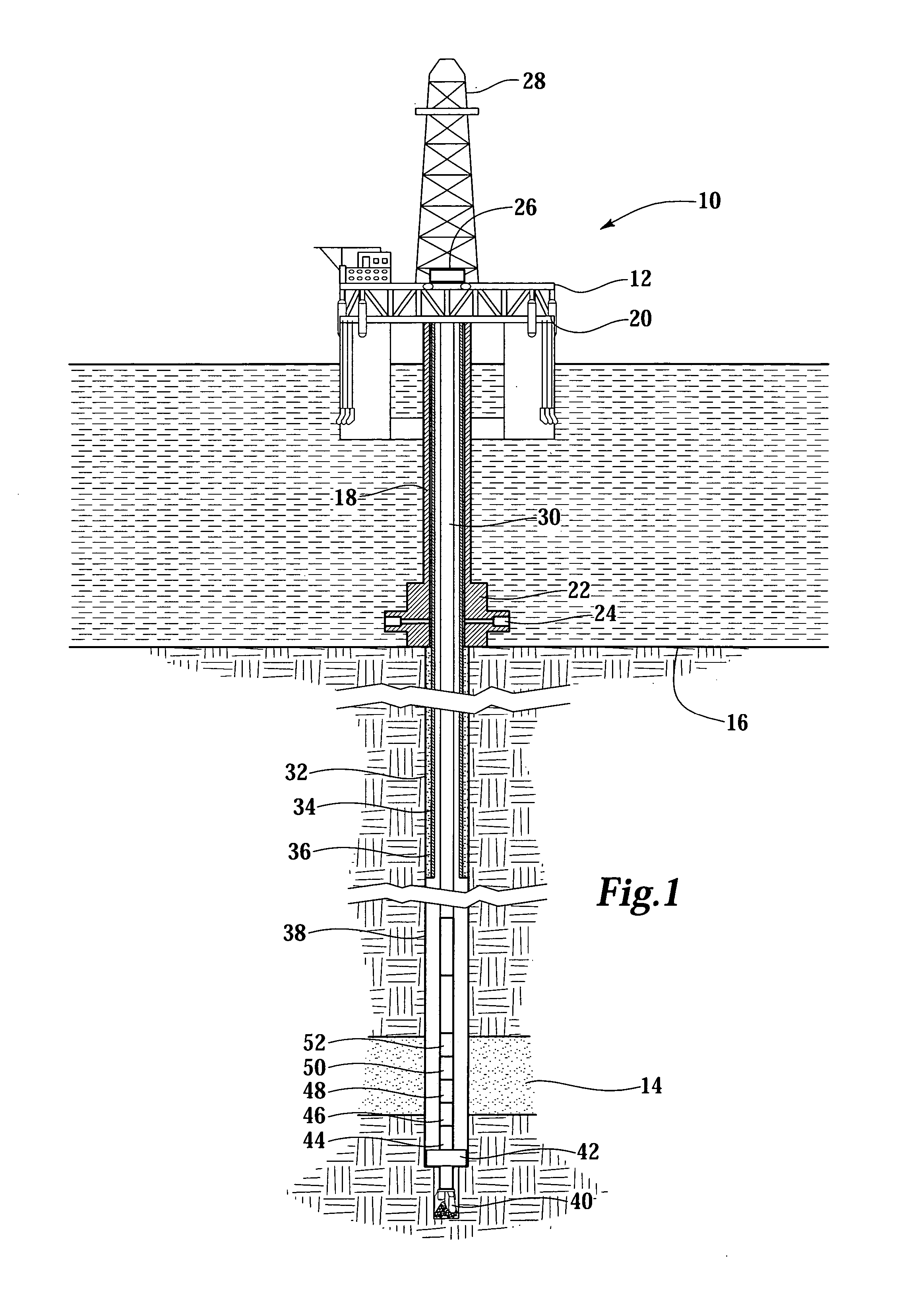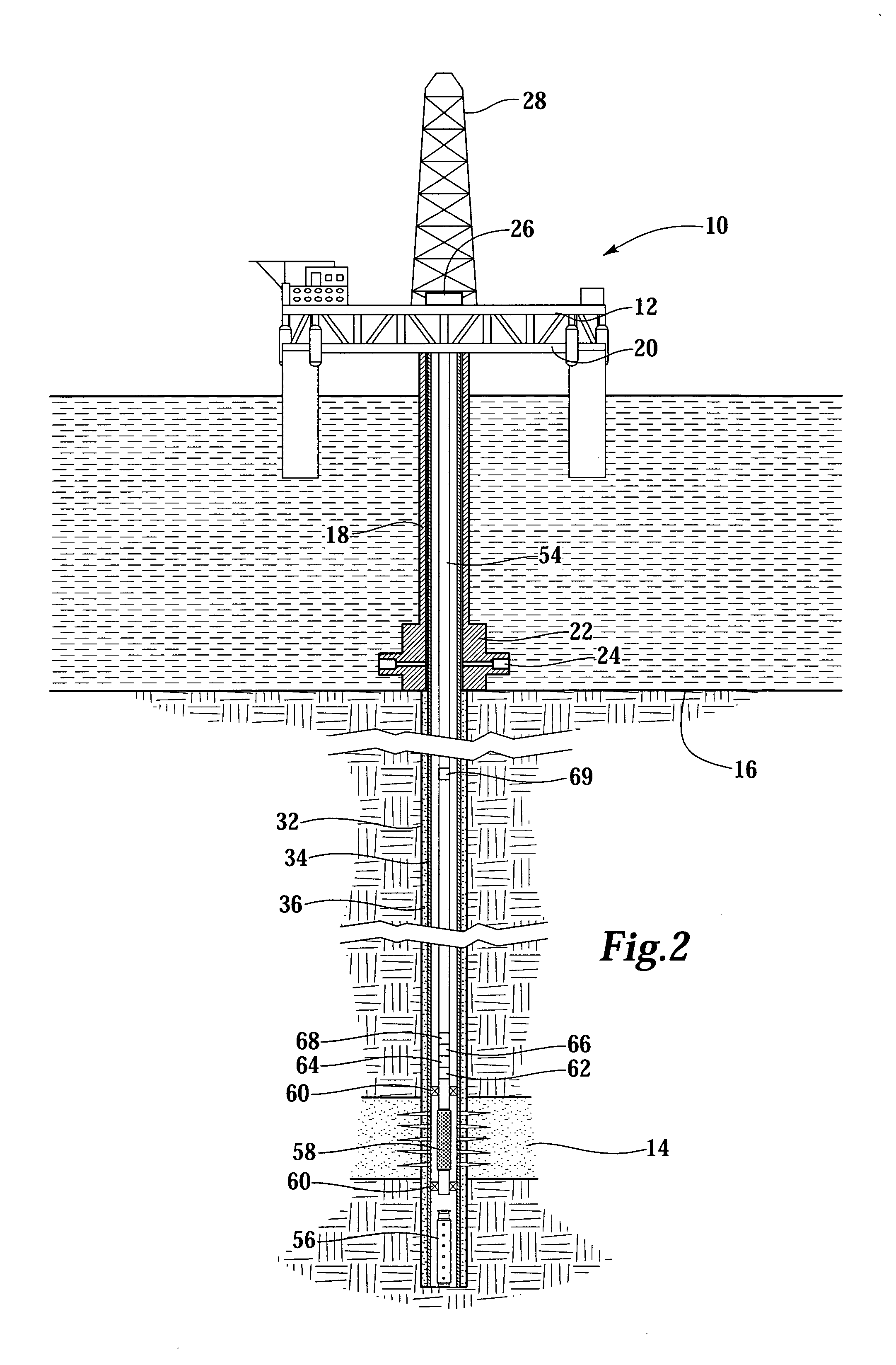Downhole seal element formed from a nanocomposite material
a nanocomposite material and seal element technology, applied in the direction of material nanotechnology, fluid removal, borehole/well accessories, etc., can solve the problems of difficult improvement, internal damage may accompany surface damage, and damage to the seal element, so as to minimize the effect of explosive decompression, minimize critical pressure and flaw size of the seal element, and improve the shear modulus
- Summary
- Abstract
- Description
- Claims
- Application Information
AI Technical Summary
Benefits of technology
Problems solved by technology
Method used
Image
Examples
example
[0068] The mechanical properties, such as tensile strength, elongation, and Young's modulus, for example, of the nanocomposite can be tailored over a wide range for the specific downhole conditions by varying the amount and type of nanostructure incorporated into the polymer host. By way of example, the following table illustrates particular nanostructures integrated into a polymer host by adding or blending the nanostructure in a preceramic state with the polymer host such that the nanostructure when heated above its decomposition point converts into a ceramic. The polymer host used in this example is a polyether block-polyamide copolymer (PEBAX), i.e., a thermoplastic. It should be appreciated however, that similar results would be achieved with other thermopolastics such as polypropylene, polyolefins, nylons, polyethers, polyesters, styrene-butadiene-styrere triblocks, and the like.
TABLE 1PeekBreakingYoung'sMeltingMaterialsStressStressModulusTemperature(% weight)(psi)(in / in)(ps...
PUM
| Property | Measurement | Unit |
|---|---|---|
| Nanoscale particle size | aaaaa | aaaaa |
| Nanoscale particle size | aaaaa | aaaaa |
| Temperature | aaaaa | aaaaa |
Abstract
Description
Claims
Application Information
 Login to View More
Login to View More - R&D
- Intellectual Property
- Life Sciences
- Materials
- Tech Scout
- Unparalleled Data Quality
- Higher Quality Content
- 60% Fewer Hallucinations
Browse by: Latest US Patents, China's latest patents, Technical Efficacy Thesaurus, Application Domain, Technology Topic, Popular Technical Reports.
© 2025 PatSnap. All rights reserved.Legal|Privacy policy|Modern Slavery Act Transparency Statement|Sitemap|About US| Contact US: help@patsnap.com



